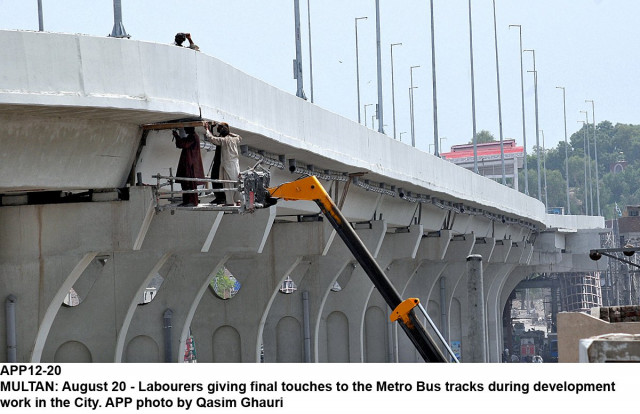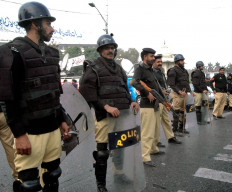
Muhammad Sadiq, 60, whose two-storey house was acquired by the Lahore Development Authority (LDA), said the biggest mass transit project of Pakistan might set new mobility standards but the development work had left devastating effects on his life.
He said the previous new year’s night had a telling effect on his family when the government started demolishing his house forcibly on December 31. “A year has passed but I cannot buy a house again as the money given by the government is not enough,” he said. “I believe I cannot buy a house again. I will have to die in a government quarter.”
Similar remarks were made by shopkeepers and business owners whose businesses have almost closed down because of the ongoing construction activity on Multan Road.
A shopkeeper, Rehan, said he had a flourishing mobile phone business near Samanabad Morr but 2016 turned to be the worst year of his life.
He claimed the metro train project had “eaten away” his shop and forced him to do petty jobs in a nearby market. “We are three families living in a small house behind the shop. But the amount given by the government was not enough to get homes for all three families when the issue of division arouse when the inherited home was demolished,” he disclosed.
There are around 2,500 families in the provincial capital unhappy either with the metro train or other such development schemes. Another 35 families – especially residents of the poor Parachute Colony neighbourhood – are struggling in courts to save their properties from the government.
Many architects and culture and history experts, especially the Lahore Conservation Society and Lahore Bacho Tehreek, also staged series of protests against the metro train project last year.
Archaeologists have also voiced their opposition to the train track construction, fearing inevitable and irreversible damage to historical sites.
The Lahore High Court has directed the government to get NESPAK reports revalidated from independent experts before restarting construction near heritage sites, stopped on Supreme Court’s order.
“By the time construction is finished, the city of Lahore will be gone,” says Kamil Khan Mumtaz, an architect and founding member of the Lahore Conservation Society.
Construction has already destroyed or affected 16 historical sites or buildings, including a McLeod Road milestone, marking the distance between Lahore and Delhi, he said.
He added the significance of a historical site or building was not just its physical structure but also its context. “Construction is now destroying the view and ambiance,” he added.
The year also proved to be a difficult one for the city developers, who initially believed they would complete land acquisition for the metro train within a couple of weeks.
Almost a year has passed but they are still stuck in litigations and vacating stay orders. Though over half of ground civil works have been completed, still it is a long way to go.
Published in The Express Tribune, January 1st, 2017.


















COMMENTS
Comments are moderated and generally will be posted if they are on-topic and not abusive.
For more information, please see our Comments FAQ